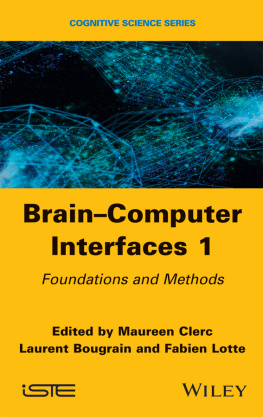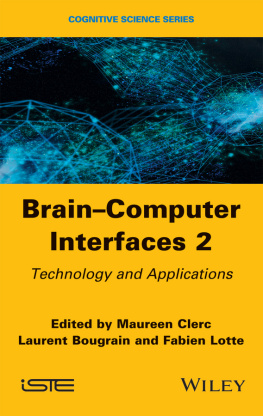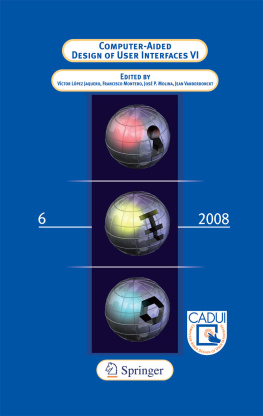Bernhard Graimann , Gert Pfurtscheller and Brendan Allison (eds.) The Frontiers Collection Brain-Computer Interfaces Revolutionizing Human-Computer Interaction 10.1007/978-3-642-02091-9_1 Springer-Verlag Berlin Heidelberg 2009
Abstract
Stardate 3012.4: The U.S.S. Enterprise has been diverted from its original course to meet its former captain Christopher Pike on Starbase 11. When Captain Jim Kirk and his crew arrive, they find out that Captain Pike has been severely crippled by a radiation accident. As a consequence of this accident Captain Pike is completely paralyzed and confined to a wheelchair controlled by his brain waves. He can only communicate through a light integrated into his wheelchair to signal the answers yes or no. Commodore Mendez, the commander of Starbase 11, describes the condition of Captain Pike as follows: He is totally unable to move, Jim. His wheelchair is constructed to respond to his brain waves. He can turn it, move it forwards, backwards slightly. Through a flashing light he can say yes or no. But thats it, Jim. That is as much as the poor ever can do. His mind is as active as yours and mine, but its trapped in a useless vegetating body. Hes kept alive mechanically. A battery driven heart.
Stardate 3012.4: The U.S.S. Enterprise has been diverted from its original course to meet its former captain Christopher Pike on Starbase 11. When Captain Jim Kirk and his crew arrive, they find out that Captain Pike has been severely crippled by a radiation accident. As a consequence of this accident Captain Pike is completely paralyzed and confined to a wheelchair controlled by his brain waves. He can only communicate through a light integrated into his wheelchair to signal the answers yes or no. Commodore Mendez, the commander of Starbase 11, describes the condition of Captain Pike as follows: He is totally unable to move, Jim. His wheelchair is constructed to respond to his brain waves. He can turn it, move it forwards, backwards slightly. Through a flashing light he can say yes or no. But thats it, Jim. That is as much as the poor ever can do. His mind is as active as yours and mine, but its trapped in a useless vegetating body. Hes kept alive mechanically. A battery driven heart.
This episode from the well-known TV series Star Trek was first shown in 1966. It describes a man who suffers from locked-in syndrome. In this condition, the person is cognitively intact but the body is paralyzed. In this case, paralyzed means that any voluntary control of muscles is lost. People cannot move their arms, legs, or faces, and depend on an artificial respirator. The active and fully functional mind is trapped in the body as accurately described in the excerpt of the Star Trek episode above. The only effective way to communicate with the environment is with a device that can read brain signals and convert them into control and communication signals.
Such a device is called a braincomputer interface (BCI). Back in the 60 s, controlling devices with brain waves was considered pure science fiction, as wild and fantastic as warp drive and transporters. Although recording brain signals from the human scalp gained some attention in 1929, when the German scientist Hans Berger recorded the electrical brain activity from the human scalp, the required technologies for measuring and processing brain signals as well as our understanding of brain function were still too limited. Nowadays, the situation has changed. Neuroscience research over the last decades has led to a much better understanding of the brain. Signal processing algorithms and computing power have advanced so rapidly that complex real-time processing of brain signals does not require expensive or bulky equipment anymore.
The first BCI was described by Dr. Grey Walter in 1964. Ironically, this was shortly before the first Star Trek episode aired. Dr. Walter connected electrodes directly to the motor areas of a patients brain. (The patient was undergoing surgery for other reasons.) The patient was asked to press a button to advance a slide projector while Dr. Walter recorded the relevant brain activity. Then, Dr. Walter connected the system to the slide projector so that the slide projector advanced whenever the patients brain activity indicated that he wanted to press the button. Interestingly, Dr. Walter found that he had to introduce a delay from the detection of the brain activity until the slide projector advanced because the slide projector would otherwise advance before the patient pressed the button! Control before the actual movement happens, that is, control without movement the first BCI!
Unfortunately, Dr. Walter did not publish this major breakthrough. He only presented a talk about it to a group called the Ostler Society in London []. There was little progress in BCI research for most of the time since then. BCI research advanced slowly for many more years. By the turn of the century, there were only one or two dozen labs doing serious BCI research. However, BCI research developed quickly after that, particularly during the last few years. Every year, there are more BCI-related papers, conference talks, products, and media articles. There are at least 100 BCI research groups active today, and this number is growing.
More importantly, BCI research has succeeded in its initial goal: proving that BCIs can work with patients who need a BCI to communicate. Indeed, BCI researchers have used many different kinds of BCIs with several different patients. Furthermore, BCIs are moving beyond communication tools for people who cannot otherwise communicate. BCIs are gaining attention for healthy users and new goals such as rehabilitation or hands-free gaming. BCIs are not science fiction anymore. On the other hand, BCIs are far from mainstream tools. Most people today still do not know that BCIs are even possible. There are still many practical challenges before a typical person can use a BCI without expert help. There is a long way to go from providing communication for some specific patients, with considerable expert help, to providing a range of functions for any user without help.
The goal of this chapter is to provide a gentle and clear introduction of BCIs. It is meant for newcomers of this exciting field of research, and it is also meant as a preparation for the remaining chapters of this book. Readers will find answers to the following questions: What are BCIs? How do they work? What are their limitations? What are typical applications, and who can benefit from this new technology?
What is a BCI?
Any natural form of communication or control requires peripheral nerves and muscles. The process begins with the users intent. This intent triggers a complex process in which certain brain areas are activated, and hence signals are sent via the peripheral nervous system (specifically, the motor pathways) to the corresponding muscles, which in turn perform the movement necessary for the communication or control task. The activity resulting from this process is often called motor output or efferent output. Efferent means conveying impulses from the central to the peripheral nervous system and further to an effector (muscle). Afferent, in contrast, describes communication in the other direction, from the sensory receptors to the central nervous system. For motion control, the motor (efferent) pathway is essential. The sensory (afferent) pathway is particularly important for learning motor skills and dexterous tasks, such as typing or playing a musical instrument.













